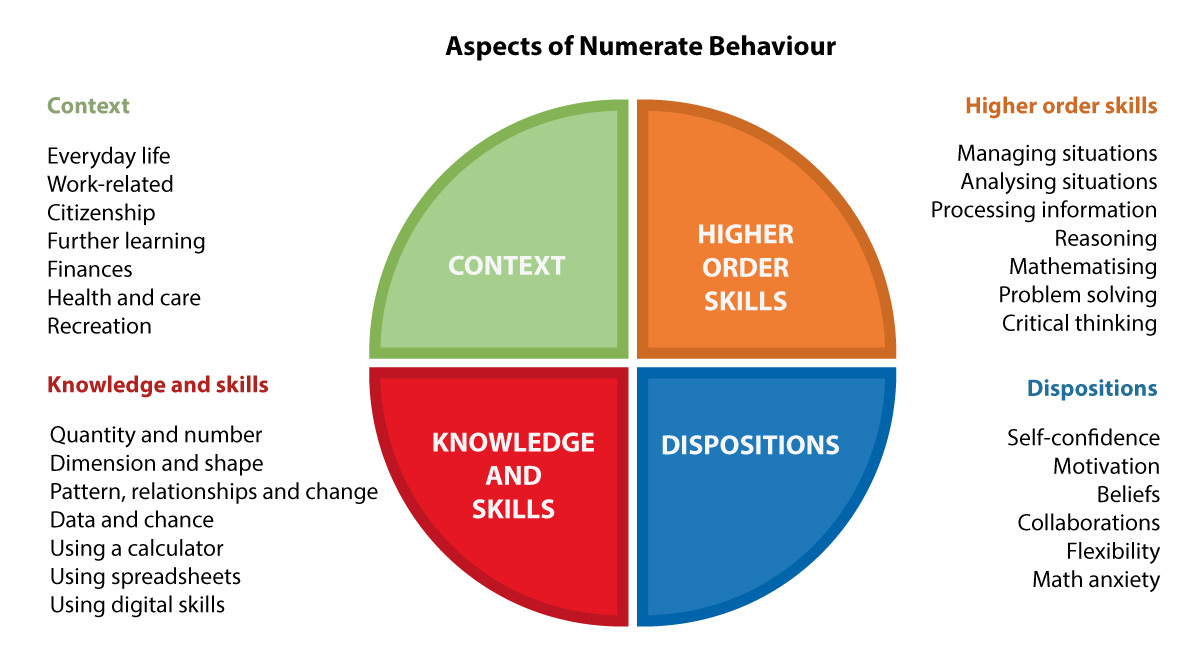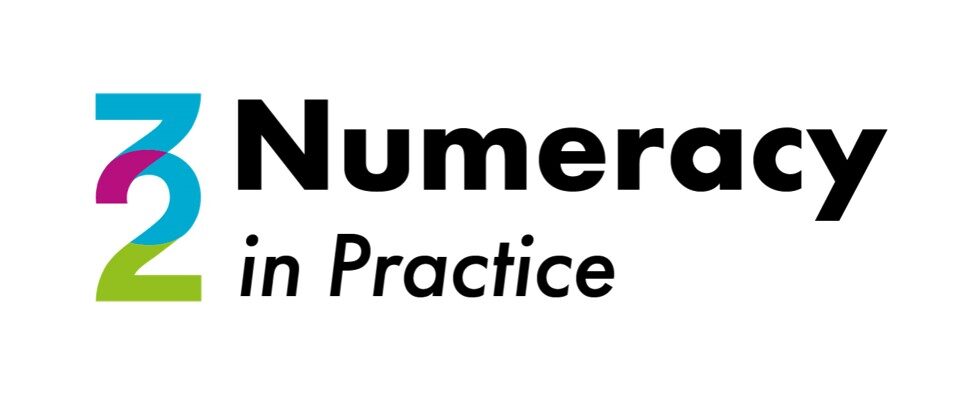Introduction
It is important to develop numeracy skills around calculations, but it is good to realize that using calculational tools offer significant benefits in enhancing efficiency, understanding, and application of mathematical concepts, making them valuable aids in numeracy development. Balancing the use of calculational tools with the development of fundamental understanding the concepts underlying the computational aspects of numeracy is crucial. It’s important to ensure that using these tools enhance learning without replacing the fundamental understanding and skills that are essential in numeracy development. That formal understanding not automatically indicate that the algorithms for bigger calculations are performed with pen-and-paper (see Hoogland, 2023).
Key Issues
The use of calculational tools, such as calculators and computer software, in numeracy development offers several positive opportunities:
- Enhanced Efficiency: Calculational tools significantly speed up the process of performing complex calculations, allowing individuals to complete mathematical tasks more quickly and efficiently. This is especially useful in professional and academic settings where time is a critical factor.
- Access to Advanced Mathematics: These tools make advanced mathematical operations accessible to a wider audience. They enable individuals to explore and understand complex concepts in mathematics, physics, engineering, and other fields that would be difficult or impossible to calculate manually.
- Reducing Cognitive Load: By taking care of routine calculations, these tools can reduce cognitive load, allowing individuals to focus on understanding and solving more complex aspects of a problem. This can enhance conceptual understanding and problem-solving skills.
- Error Checking: Calculational tools can be used to verify the accuracy of manual calculations. This dual approach reinforces learning and understanding, as individuals can compare their manual solutions with those provided by the tool.
- Visual Learning and Representation: Many modern calculational tools offer graphical representations of mathematical concepts, which can be particularly beneficial for visual learners. Graphing calculators and software, for instance, can help in understanding functions, geometric shapes, and other concepts through visual means.
- Real-world Application and Relevance: These tools can demonstrate the real-world application of mathematical concepts. For instance, financial calculators can help individuals understand concepts in economics or personal finance, making math more relevant and interesting.
- Inclusive Education: For students with certain disabilities, calculational tools can be invaluable. They enable these students to participate in math classes and understand concepts that might otherwise be inaccessible to them.
- Encouraging Exploration and Creativity: With the burden of complex calculations handled by tools, individuals can focus more on exploring different approaches to problem-solving, fostering creativity and innovation in mathematical thinking.
- Building Confidence: For some, particularly those who find mathematics challenging, the use of calculational tools can help build confidence. Knowing that they can rely on these tools for assistance can make them more open to engaging with mathematical tasks.
- Preparation for Future Technologies: In a world where technology is increasingly integral, familiarity with calculational tools prepares individuals for future academic and professional environments where such tools are commonplace.
Relation to Framework

Suggestions for PD meetings
Issues around the everyday use of tools
Discuss the flowing issues around thenuse of tools for calculations.
The issues below are mentioned a lot in media to warn for the use of everyday tools like a calculator. They are from another paradigm on tool use than the key issues mentioned at the start of this modules. Discuss them and discuss ideas how to counteract those threats with relevant educational approaches.
- Dependency: Over-reliance on calculational tools can lead to a lack of fundamental skills. Individuals might become dependent on these tools for basic calculations, hindering their ability to perform mental math or understand the underlying concepts.
- Understanding Concepts: While calculational tools provide quick answers, they may impede the deep understanding of mathematical concepts. The process of manually solving problems helps in grasping why and how certain mathematical principles work, which can be bypassed with the use of these tools.
- Error Recognition: Without a solid understanding of the underlying mathematics, individuals may find it difficult to recognize when a calculational tool has provided an incorrect or implausible result. This is particularly important in situations where estimation or checking is necessary.
- Development of Mental Math Skills: Mental math skills are important for everyday tasks and quick decision-making. Relying too much on calculational tools can weaken these skills, making it more difficult to perform simple calculations in situations where tools are not available.
- Educational Disparities: Access to calculational tools can vary widely, leading to disparities in education. Students without access to these tools may find themselves at a disadvantage, while those who rely on them heavily may not develop sufficient manual calculation skills.
- Problem-Solving Skills: The process of working through a mathematical problem manually can develop critical thinking and problem-solving skills. Overuse of calculational tools might limit the development of these skills, as the tool often bypasses the problem-solving process.
- Technological Limitations and Misuse: Calculational tools are only as good as their programming and the user’s ability to use them correctly. Misunderstandings about how to input data or interpret results can lead to errors. Additionally, these tools might not be suitable for all types of mathematical problems.
- Assessment Challenges: In educational settings, it can be challenging to assess a student’s true understanding of mathematics when calculational tools are used. There’s a risk that assessments might evaluate a student’s ability to use a tool rather than their understanding of math.
Background information
The issue
Conducting large calculations manually with pen and paper following prescribed procedures or algorithms has been diminishing in significance for some time. In most cultures, and for many years already, individuals employ digital instruments for such computational tasks, when confronted with them in daily life.
Yet, a closer examination of prevalent practices in the teaching of basic numeracy skills in adult education reveals a persistent emphasis on mastering standardized manual calculation techniques, especially with abstract and decontextualized numbers. This emphasis predominantly stems from the belief that mastering these manual procedures forms the cornerstone of all numeracy abilities. Contrastingly, our research indicates that the numeracy skills most frequently utilized and required in contemporary professions and daily activities encompass higher-order capabilities (Hoogland and Stoker, 2021; Boels et al., 2022; Hoogland and Díez-Palomar, 2022). These include interpretation, reasoning, mathematizing, estimation, critical reflection on quantitative data, and the application of digital instruments for computation. It is imperative, therefore, that numeracy education for adults prioritizes these competencies to achieve efficacy.
Exploring the issue
Present-day society is profoundly infiltrated by websites, expansive data sets, computational models, interconnected data networks, hyperlinked configurations, filter systems, and online applications. These predominantly digital entities are fundamentally rooted in mathematical concepts and principles. Media communication has witnessed a surge in data utilization, evident in the proliferation of visual representations such as tables, charts, and diagrams, all underpinned by big data and data-driven indices. Algorithms, in this context, not only guide our actions but also mold the informational spheres or “bubbles” we inhabit. Succinctly, our society has undergone a significant mathematization over the past four decades, attributable to technological advancements and the digital revolution (see, for instance, Gellert and Jablonka, 2007 and Skovsmose, 2020).
Globally, there’s a unanimous agreement on the necessity for individuals, whether as professionals or citizens, to possess adequate and multifaceted numeracy skills to engage effectively in the number-drenched world as described above. This is corroborated by studies on 21st-century skills and global competences (Voogt and Pareja Roblin, 2010; OECD, 2016; Schwab, 2016). Data from PIAAC underscores that a substantial number of citizens are lacking these essential numeracy competencies (OECD, 2013). This lack impedes their autonomous and effective participation in our technologically advanced, numerically saturated societies, leading to potential occupational exclusions and daily life challenges.
While adult numeracy educational practices should mirror these broad, multifaceted competencies for effectiveness, a significant portion of such practices remains anchored in manual calculations with abstract numbers. Although there’s a discernible shift toward materials and strategies that align with the aforementioned broad competencies, the traditional computational approach remains deeply entrenched. Subsequent sections will elucidate the primary cause for this enduring incongruence, with a deeper exploration of the evolution of basic numeracy skills.
Literature
Constantakis, P. (2016). Integrating Digital Tools for Adult Learners: Four Critical Factors. USA:Washinton. https://digitalpromise.org/2017/06/27/integrating-digital-tools-adult-learners-four-critical-factors/
Geiger, V., Goos, M., & Dole, S. (2015). The Role of Digital Technologies in Numeracy Teaching and Learning. International Journal of Science and Mathematics Education, 13(5), 1115–1137. https://doi.org/10.1007/s10763-014-9530-4
Gravemeijer, K., Stephan, M., Julie, C., Lin, F.-L., & Ohtani, M. (2017). What Mathematics Education May Prepare Students for the Society of the Future? International Journal of Science and Mathematics Education, 15(S1), 105–123. https://doi.org/10.1007/s10763-017-9814-6
Hoogland, K. (2023). The changing nature of basic skills in numeracy. Frontiers in Education, 8. https://doi.org/10.3389/feduc.2023.1293754
Sakurai, J., & Goos, M. (2023). Revisiting tools in numeracy learning: the role of authentic digital tools. Frontiers in Education, 8. https://doi.org/10.3389/feduc.2023.1291407
